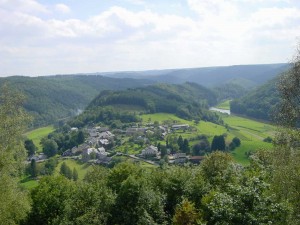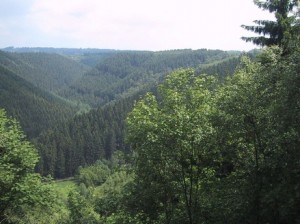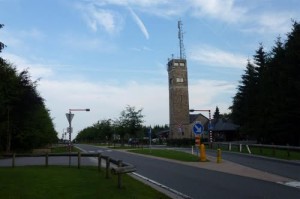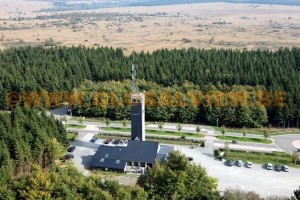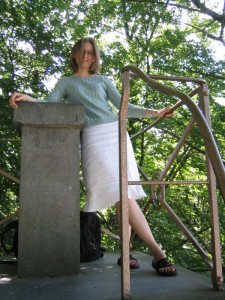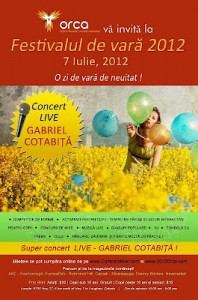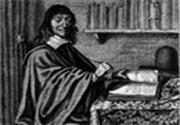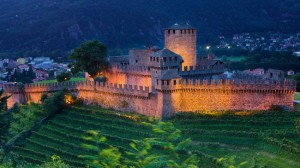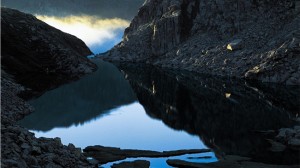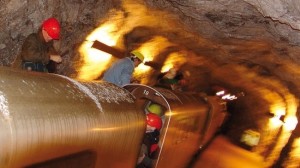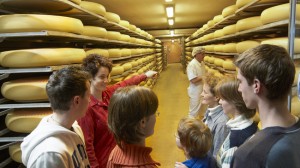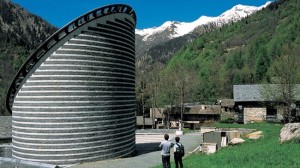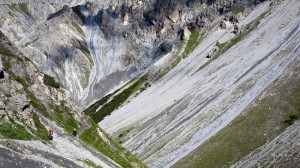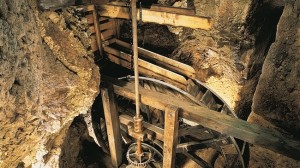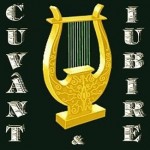
The Grandeur of Red Fort, Delhi Diary
***
Rodica Anca
DELHI DIARY
18 November 2003. To Shiva
We read a wonderful book: Poems to Shiva – hymns of Tamil Saint Poets. We like them so much! I will copy some, which I will try to translate after we arrive home, to see just how beautiful they are. But I can not abstain from transcribing one now:
Bhiksatana: „The Beggar”, witten by Appar
He came to us singing songs in varied rhythms,
And took us by force.
He shot the arrows of his eyes at us;
With speeches that stir up passion
He skillfully seduced us, made us sick with love.
The skull-bearer god has mounted his swift bull;
Wearing a skin, his body covered with white ash,
A sacred thread adorning his form,
Come, see the Master as he goes riding where all can see him.
The Lord of Amattur is a handsome man, indeed!
The white bull he rides is in no way inferior
To rolling chariots, horses and elephants.
The dark-throaty one with the fiery red form,
The god whom the Himalayan gods praise,
Owns no wealth, yet is a rich man.
The Lord of Amattur, who wears a tiger skin,
And a garland of cool blossoms,
And rides surrounded by his demons,
Is a handsome man, indeed!
***
28 Nov. Kurukshetra
Yesterday we were at Kurukshetra, 3 and a half hours away. Satiavrat came and took us to nearly eight o’clock, by car. I did not ever expect to like it so much that trip! The road was perfect, all with over 100 miles, across beautiful houses, new, clean. Not to say about the landscape. Eucalyptuses, like poplars, on one hand and the other, the highway with no bump, three lanes per direction, in the middle bougainvilleas, oleanders and roses all in bloom! Cars and general traffic, full of picturesque. Trucks overloaded with various rags, tractors carrying overfull trailers of all sorts of packages bags, hay, sacks and what they may have had there, carts drawn by a horse buffalo or ox, motor-scooter-taxis, motorcycles with at least three persons and a large bag, stylish cars and others more worn out, coaches, buses, jeeps extra, cyclists, rickshaws, etc. All the way on one side and on the other, dhabas for repairing vehicles, tea rooms with plastic chairs very brightly colored and tinsel remaining probably from Diwali, last fashion petrol stations with at least 10 pumps each, and with toilets, modern or older, what more, as if I wouldn’t believe to my eyes: very clean! India is no longer that of 20 years ago, with empty plains and piles of garbage. I liked it!
As you get into Kurukshetra, a statue of Krishna, painted of course, right in the intersection. Make a left on next to him, and after 50 meters, an arc across the street carry on it, like Brandemburg Gate, a Chariot with Krishna and Arjuna in respective battle. More about 2 miles across, the King, I do not remember the name now (Dasarata, but do not know how to spell), farther a statue of a modern character. This on our route to the University, which does not compare to that of Delhi. Modern buildings, with large, clean windows. Well, University of Delhi, where we are, was built by the English, and was the Palace vice-king until 8o years ago, but since then, nothing new or even upgraded. Professor S. remained at his job and we went along with another teacher there, to see the city.
We went first to the Temple built near two banyan trees, where, they sustain, Lord Krishna revealed Bhagavad Gita. I had to know how it’s called the Temple, but knows G, that he spoke with the guy who was accompanying us, while I agitated to do pictures. Anyway, the guy said that they are the same trees from about five thousand or so years ago, and although they were old and protected with nets on top of crowns, as if I wouldn’t believe it. He presented us also to a very intelligent, cult and talkative swami, after that I managed to make them to leave. In the meantime i made a picture of a mendicant monk, which will come out it will be thunder!!! I gave him 10 rs. I bought a bottom and a pot stick for chapati, a spoon and a wonderful wooden spatula, not to use them, I bring them home for being so beautiful. I bought more a Shivalingam and a support of incenses of glazed clay representing the serpent Shesha, used by the gods, to beat a pot stick in a kind of cosmic churn the primordial ocean, out of which they extracted “amrita”-ambrosia, the food of immortality of the body and spirit, and butter milk!
We went to the canteen, Guest House there, where we ate very well and not too chilli, about 4-5 dishes of vegetables with rice, fruits, chapati with I not know what greens through them, tea. Very good everything. There was also a Minister, it seems to me of finances, who ate also then. I carried out, I got hidden after Satiavrat’s car and I finally pulled a cigarette, that I was cracking.
After that, we all went and have seen Birla Temple, which has etched in marble plate, embedded in the wall around the lobby, all text Bhagavad Gita. A rather large Hanuman, dressed in red, who tears up his chest to show us that he has there a picture of Rama, receives us pathetic at entrance. They had also a globe of marble carved with continents, mountains and seas, which seemed very old, but no one else besides me gave it any attention. In another yard, a chariot (I don’t know what word to use, can be cabriolet or car combat) cool. I pictured it and a I have it also in a folder.
I forgot to say that before the meal we went also to the Museum of Archeology and not only, that I saw it in a hurry because the director kept us a lot of conversing, but I liked him. He was full of passion and imbued of respect for the plain of Kurukshetra, which, he said, lightened and made him better. He was from Orissa, as well as the other teacher, and he was unable to separate any more from that place (or the place didn’t allow him to leave), where even the Buddha, said he, came to preach twice. (Orissa, to 2,000 km in the South, o Lord, how great is India!)
Returning afternoon, I saw square lake, with porticoes around, where, say they, Brahma had created the world.(!). A little too small for that, I think, but rather large, about 4-6 stadiums in one place. Temples everywhere, pink-bonbon, but also some white.
With that, it made almost 4 pm. Come on also at the Museum of “Sciences from Vedic time”, and the Panorama of the Battle of Kurukshetra. To “Sciences”, these guys didn’t really have left me to look, but good luck with S’s “urgency” that he went twice, and until they expected him to come, I peeked with the around. Magnets, hourglasses, a map of the sky on a glass balloon, an alembic from two pots and a tube from scorched earth, solar eclipse, textile industry, etc. etc. I would have liked to stay longer to research.
We went upstairs where all around is a immense diorama (or how would they call it), with scenes of battle. 4 m high, I think, and continued in the bottom, horizontally, with mannequins in three dimensions, some alive, some dead, sand, vultures which peck the dead, so to say, in full dress. You rotate as wheel and find explanations for all you see on the wall. Satyavrat was very proud of the achievement. Good, really, for primary school children, but what I do intrude, a whimsical hag! Their bravo that they did it, though they could use their money better! (Look at me how I give me value!)
And with that we went to Delhi, where we ended up in the dark at 7. The lad came – he seemingly said that is called Akeelesh, from (Achilles?) – as promised. I liked him. He is 24 years, drives since five years across India, where Satyavrat carries him.
11 January 2004. Mother and Daughter
Last night we were at the restaurant. Oberoi. Leela and Shama came and took and and treated us with all sorts of Indian goodies. I think they gave thousands of rupees. What to do, they wanted, I would have preferred to stay at home to order dinner downstairs and talk. As about talking, we talked also there. Sharma was married, she had divorced two months ago, that they didn’t understand each other. But, as I already said, a divorcee woman here’s as stigmatized. They told us about this in great secret. Leela, his mom, it’s full of life, as it was also 20 years ago. Short, even more than I am, full of energy, much joyful to see us again. Sharma is a little higher than she, plump and pretty. She has something, I don’t know what kind of glue, of come here, which makes her very enjoyable. I found out about Neeru, her older sister, married in California, with an Indian too, with whom she has a two years old daughter, after that Leela’s maddened. She is sorry that Shivji didn’t reach to see and take her in his arms. Leela told how she played with children and gathered around her, but if her husband entered the room, without speaking with anyone, only standing and looking at them. All children went to him. He died on 1st July 1999. Was killed. He had been at the Bank, was pursued and even at few houses from his home, on day, at 11.30, was robbed and hit in the head. He died in hospital three days later, without having to revert any more. Of course, that the police never discovered until today who murdered him. And, funny thing, the exact same story, the same day and at the same time, was in another part of town, with a known of theirs, who had 2 lacks (200,000) in his bag, removed from the Bank, also in front of his home. Someone threatened him with the gun, he told him to take the money but do not shoot him, took the money and shot him. Neither his assassin was discovered. Leela was sad, but she re-conciliated with the situation now, that life must go on, she said. Her luck and power are now the two daughters. At first she was angry with everyone, but slowly, the wound has closed, though it’s still painful, and she sees after the two girls. It goes every year in California, at Neeru, Shama stays with her, so she is doing with her pain somewhat. And what a fine man was Shivji! And great personality in the field of law. Dinner last night was, I believe, also in his memory, and to prove to us that they manage. At return we boarded at us and I’m sorry that I didn’t treat them with Romanian brandy, because I understood from Nana that they would have wanted to take also win to the table, but if we didn’t want…
15 Jan. Eminescu Seminar
Today I was at University with G at the Eminescu seminary, organized also in occasion of turning 25 years of teaching the Romanian language in India. All students have arrived, plus a few guests of theirs. More an accountant and a radio-singer, writer and humanitarian activist called Satish Solanki. He came at us the day before yesterday asking G to write him some expressions in Romanian, such as:” God is one “. And others, that he have them written in different languages and he said that he wanted to make an exhibition of all. And had enough! A strange figure, with a striped head little cap, frail body but, if he didn’t exaggerated, with great soul. I neither know from where to take him, nor where to put him. 10% of his income, which I don’t think is particularly big, he puts for charity: mental handicapped children, blind ones, to whom he goes every day to sing them, to cut their nails, to keep company. He helps the girls to comb, let them know if they have been properly dressed, before going to some courses. He is married and has two children. He has learned on the spot the anthem of Romania (first stanza, that even we do not know any more!), and “Lioară Lioară”, two verses (all the same). You had to hear how it sounded … That he has put in melodies strong Indian accents, that they didn’t seemed any more Romanian music, but were neither disagreeable. Today he came and sang them in the class, better than the students of G. About which I have to admit that they have worked hard to understand the words in carols sung by Hrushca! Could be recognize only a word or two, but I’ve realized how much have striven. I promised them to go after hours to help the to understand and pronounce the words correctly, because at melodies they are doing very well, in the style of “avaramu”. More strange is that one of them, Muslim by religion, sang a carol (also from the respective box sent to from the library) and the word he pronounced most correctly was “Precesta”/Holy Mary. I think that if he had known what he’s singing there they would skin him! Others have said poems by Eminescu, Chitranjan was the presenter and gave a speech in English, with a few phrases in Romanian at first (but what claim to have any, barely two months and a half – of which there were three weeks vacation and holidays – have started to learn!), about Kālidāsa and Eminescu, a parallel between Shakuntala and Calin. He’s the best, more tenacious and most serious of all. He wants to come with scholarship in Romania, struggles, that he is child of poor people and wouldn’t have with what to pay the plane even in two lives!
Vibha, head of the Department, came, too, when she heard that it is question of treat (I am wrong, it was her duty to take part and also the students had invited her, hoping that she will not come – otherwise, they wanted to invite even Geoana!). I told a girl, Seema, to give her the bouquet they had given to G, in order to pacify her, and she did it, after I told her that I still heave the roses she had gave to me on Sunday. It tickled the little belly of chief lady, you see. But still she spread snot, saying that the accent must fall on the struggle for freedom in contemporary literature, not on old works, which now no longer have much interest, such as Sanskrit religious writings! See from where the descendent of Lenin jumped! Communist up to the nail tips, what more! Come to the great fight, brothers fighters for freedom! fight the great freedom fighters, brothers! What has this with the Prefecture, I do not understand! That just is not the Chair of political sciences! But leave her, with propaganda, and let return to the students, who had put hand to hand and had served some refreshments and a cake on which they wrote “Mihai Eminescu’s Anniversary” (I don’t know if I spelled well). Also, a banner that reads like this “25 years of Romanian teaching in Delhi, the silver jubilee, Dr George Anca” and do not know what more, but G asked it and we have it at home, as souvenir! why, but he asked and we G, home of remembrance! They had also a CD-ROM sent from home, quiet tasteless and without any comment or sound.
23 Jan. Gayatri
Meaning of Gayatri. “OM Bhu, (or Bhooh), OM Bhuvah, OM Suvah, OM Mahah, OM Janah, OM Tapah, OM Sayam.
OM Tat Savitur Varenyem, Bhargo Devasya Dheemahi, Dheeyo Yo Nah Prachodayaat”
OM means THAT: The Absolute Sun of Immeasurably Light (consciousness) that trigger our impulses (mind).
This Mantra is clearly divided into two parts: the first part contains the seven Vyahrities, the second, the mantra itself. In Sanskrit mantra has 24 syllables. It is composed at a pace that is called “Gayatri Meter”
The seven Vyahrities. These seven steps form the first part of the mantra, and represent seven invocations. ii. They invoke the seven layers of this universe, that is Creation. This universe is composed as a song, say the Vedas with the help of the seven musical notes (Sapta Swaras). For instance, we see a stone, trees, animals, birds, humans. All these exist, but not in the same way. The existence of each is placed at a different level. The stone exists only at physical level. There is only the physical stone. A tree there is a physical but in the same time, there are biological, biological world other than being simple physics. A tree exists physically but, at the same time, exists also biologically, the biological world being other than that simple physical. Thus, the life of a tree is held in two plans: in the material, as with the stone, but also in the vital plane, called the feeling, while while the stone exists only on the material plane. This lowest level, or Physical Plane, is called “Bhoo” or \”to exist, to be” in Sanskrit. The plants are living in the the Vital World, with Prana (the principle of Life), in the second plane, called “Bhuvah Loka” or Vital Plane. Both plants and animals are living. But the animals have a higher level of being. The animals think, while the plants live only in vegetative plane of life. The animals move, but this is not the real difference. It consists in differentiation at level of the Consciousness, or Mental Plane. Plants are lower than animals in this plane. These rates or planes in the ranks of Consciousness are called Vyahriti. Thus, all seven Vyaahrities are various degrees of Consciousness: 1. Bhooh-the physical plane, 2. Bhuvah-vital plan, 3. Suvah – mental plane 4. Mahah-intellectual plane 5. Janah-super mental plane. 6. Tapah-spiritual plane, 7. Satyam – the divine plane, The Plane of Absolute Reality, which is Brahma or the Universal Mind. or Brahma.
The creation of These seven levels of Creation are described as the Seven Steps to the Temple of God. These Seven Golden Steps have to be climbed by any creature, one by one, before arriving at The Highest. This means that before you get to the full Union with Brahma, which is the goal of the Brahma Vidya, meaning in life, everyone should be developed by completing each of the seven Locas.
The seven Vyaahritis refers likewise to the seven vibrations, as we see in in rainbow or the solar spectrum. All seven Lokas (Planes, Levels, Worlds) are part of the Brahma, which is like the white light that contains all seven visible colors in the solar spectrum. Also, the mantra OM contains all seven musical notes, which are all in Brahma, the creator of the universe.
Gayatri is a Mystical Formula that contains the essence of Vedic teaching. Gayatri refers to the universe as a living thing and we are learning how it can be studied. “You are the universe”, says, ” you are The Living Time (Ayu) or living period of the universe, thou art the Divine Path”, in this way addressing to the Universal Power within human body.
7 Satya Loka (The Divine Level) – Sahasrara Chakra, topping
6 Tapo Loka (Spiritual Level), Agna Chakra, between the eyebrows
5 Jano Loka (Super Mental Level) – Vishuddhi Chakra, at the base of the neck
4 Mahar Loka (Level of Intellect)-Anahata Chakra straight to the heart
3 Swah Loka (Mental Level) – Manipurana, opposite the navel Chakra
2 Bhuvar Loka (Vital Level) – Swadhistana Chakra, the sexual organs
1 Bhu Loka (Physical Layer)-Muladhara Chakra, next to coccis
The one who has created the universe has created also the Man after the same pattern. This pattern is based on the Structure expressed by Gayatri: The Law of the Seven. There are seven basic Vibrations produced in Akasha (Aether). From the beginning of Creation, Brahma, who is the Creator, existed as principle of the sound. This primordial sound is called “Pranava”, “OM”, Brahma. Gayatri is the symbol for the potency and forces contained in this Primordial Sound called “OM” (not as we use it but as it emanated from Creation as Universal Vibration). Pranava represents both the Universe and the Man, built on identical foundation. This first Cosmic Sound Vibration gave birth to seven tones. These seven vibrations (tones) were descended from Brahma on Earth like the seven steps of the ladder in the form of the seven Vyahrities. This Scale is the link between Man living on Earth, in the Material (physical) plane, with help of which he can rise to the spiritual heights of consciousness symbolized by the Interior Sun.
26 Jan. Republic Day
National day of India. Parade. Seen also by me at TV set in the canteen. I went since 9.30. There were more some 5 – 6 Chinese, or what were they, and the boys from the kitchen. Started with laying of a crown (not great!) to the Unknown Hero monument, which is located at the All India Gate, represented by a rifle with the pipe down, over which is put a soldier metallic cap, and four flames in the four corners. I liked it. Sober and suggestive. On the whole arch of India Gate are written names of heroes, I think of the last 54 years, since the Declaration of the Republic. Vajpayee kept 2 minutes of silence. And it was so quiet, that only the crows were heard! After that, he went to the floor of the Raj Path – the path of Kings – where also the President of India came together with that of Iran. Ours was tiny, black and with white locks, dressed in gray suit, Indian model. Of theirs, tall, with white skin, black turban, dressed in their costume – a sort of overcoat-toga, up to ground, gray beard. The President of India, stood on a kind of throne, higher than other armchairs, with high back, red. The rest, on the white armchairs. They had window panes around, that they feared terrorists. When the anthem was sang I raised standing (so I know that it is customary to them) and after me also the Chinese. I was touched, as I remembered it from 25 years ago, almost to give me the tears, that thus I get moved at solemn festivities. Then began a military parade. Every echelon, with its fanfare in front, with specific very beautiful clothes, recalling the old miniatures and paintings with rajahs and wars, all with turbans, with fans of various colors, made of starched veil. Yes, they were impressive. They had started from all parts of India, that you could make ethnology and typology watching them. That, in every echelon, all looked as if they were at least cousins if not even brothers. Mustached, haughty, tall, handsome. I think they have been selected, that surely they wouldn’t be all soldiers so vigorous, tall and stately! After the soldiers came the war machines: tanks, cannons, radars, helicopters, airplanes. Navies on air-cushions, and, especially, many kinds of rockets! It was also an echelon mounted on horses, other on camels. Now, I say, also the elephants will appear! No way! Nothing of the kind. At the end also the policemen from Delhi. Again very selected. “With you, for you” is their motto.
All that I wrote in the last nearly an hour, is lost because the light was taken and I didn’t save it! I try to rewrite, but I don’t know if I still have patience.
They followed Indian States ‘ allegorical carts. Each with what had representative as relief, industries, habits. That from Orissa, I think, had a large face of Buddha, followed by a temple of paperboard, very detailed and well made, in whose court prayed a few monks dressed in orange bedding. Others, from Goa, had a big boat which drew after it a still bigger fish, baskets with fish, dancers with nets, and after car, came about 6-7 large and beautifully colored fishes. Another car has a little mountain with sheep breeders and basket knitters. There were hoses, specific costumes, animals of flowers, monuments and dancers. (Mother, how enervated I got that I can no longer get into that atmosphere! Fucking bigili! -electric current, that is). After the cars of states followed those ministries. That from the energy had a pier over which the water flowed and all sorts of pillars and installations. That from the Metro – “Delhi Metro, mera Metro” as they sing it on the radio all the time, had an underground wagon with platform and travelers, and another on the flyover, little smaller than life-size. It followed, I think, that of railways, which also them had a train wagon, with carthwork, workers who dealt with it and head of station. This guy has snatched the applause. There were many others, but now they have flown from my head because of the interruption of current. I was getting ready to leave the TV – the Chinese had gone, I had remained alone, Pinku been liberated, Pinku swept besides me, my neck ached, I hadn’t smoked since about three ours, when, behold, the elephants! More than 10, certainly. And wore in their canopies, or how they have been saying, those 11 boys and 10 girls who were chosen this year to receive the Award of Merit. I was glad I hadn’t gone, it was not possible that they be not present to parade, most proper symbol of India, say I, as a non-Indian woman. After them, the orchestras of girls, boys from different high schools and universities, young social activists or otherwise, all volunteers. I didn’t stay anymore. When to go, I was asked by those from the kitchen, if we don’t want to eat there, that they have chicken. But the sleepy one didn’t want to descend, though I would have liked it, that I hadn’t eaten chicken since Nana was here, taken from the Tibetans, “the Manchurian chicken”. I came up, G at chess. I think he was beaten that he took on me and I didn’t insist to come also him. Before the pause of current, I had made the pasties with flavor of chicken, boiled the milk and washed the dishes. G slept until now, instead of washing on head! Upon evening is going to be too cold. Outside since some two ours haunts, that alarmed the parrots and meenas, which I hear screaming frightened, as from fire. Neither the monkeys appeared. Only one, erring, didn’t know how to jump more quickly the fence into the Grove, also by fear of helicopter. The Cyber Cafe was closed, it’s celebration, so I didn’t either to pissing place. Look, Mr. did awaken, bothered by my rattling and by helicopter. He went to wash. I go to lit a cigarette, that I am ostracized and I can not smoke when he is sleeping but outside or in the kitchen only! I do not want to impose my human rights, to not spoil the atmosphere.
I don’t think I rewrote everything I had written before, and neither of quality I am not content, but it should be a teaching on mind, not to forget again to save. But also this dull computer, it was also its duty, and may make it from time to time. Shame to it. Well does G when beats it at chess that humiliates it! Again the helicopter passed, I think it jumped over 20 tours, what would be it wanting? It flurried all the birds, animals and children, who are kept after him and run here and there in the yard. I read yesterday in the newspaper that they feared terrorists, not to ruin the National Day. But the Delhi Police is on duty, as we see and, especially, hear! Not to say that also the building shakes , and it has no more than 50 m high of flight. But also some good part has this helicopter, chased away the monkeys and I am not any more afraid to go out on the balcony! maimele and not shoo me less afraid to go out on the balcony! I hear it again!
27 March. Bell
Esha called in the morning and promised that will pass by here! Meanwhile Chitraranj came and I sent him in Janpath, after bell. I see that he is not returned, nearly four hours, I hope that nothing has happen on the way! Esha came, then, and said that she made two hours up to here! Esha is a very sentimental being and I am very closed to her. It was pleasant to recall the times of 20 years ago, girls, how were they and how well did they got along. Se told me that if I go back, to stay at her, she gives me a room and I do what I want! What to want I? I’m not coming back anymore. We promised to keep in touch on em. Her great pain is that Radha, who is same age with Nana, neither has a friend nor does plan to marry. And mine is likewise! But what do we know, the old ones, how goes on the life of youth now! I sent to Radha, the gray suit from Nana. Esha came with bacon. Which we ate now, after she left. I kept also for Chitraranj. Whether he would be eating meat, I don’t know. G ended, grace of God, the conference of tomorrow, I’ve passed it on floppy disk and I went to Bobby to multiply it. Now he went to sleep and left me at computer as much as I want. Only that I am with the care of that boy! Until he comes, I have not peace! Better I would have not sent him! He may have gone buy bus, although I gave him money for Scooter? (Since I didn’t eat any more meat, the bacon fallen hard on me! And I have not any more triferment!)
He came, finally, just after 8 pm! He brought me a bell that works, but gave on it 562 rs! Plus the transport coasted me 670! When I could get it the day before yesterday with 275! So it must for me!I shall! Let give the money to cats!
I spoke with Nana, a lot, an hour! I was worried that she didn’t know about us, she wanted to call us. Also I would have called her if also today the booths wouldn’t work. I’ve told her about the bag and the other stuff that I’ve picked up and she was excited. But, kind of sad, for she is alone. Apropos of also Esha said about Radha who stays and sweep the house or deals with the garden! When not at work.
We read through newspapers about the war, I hope God helps us get out of here and get home safely. It came a card from Vinod, whose mother died recently, one, two days. Mothers die… be mild their dust! Wait, here is burning, I don’t know how would be saying anything other than condolences. I call G now. Sunday comes around.
The water didn’t flow all day. Zero bathroom! Tomorrow we will go to Conference unwashed on heads! Mayby it will come overnight, if we have luck. If not, don’t!
Translation by George Anca
